12 Abandoned Michigan Villages You Can Explore On Your Own
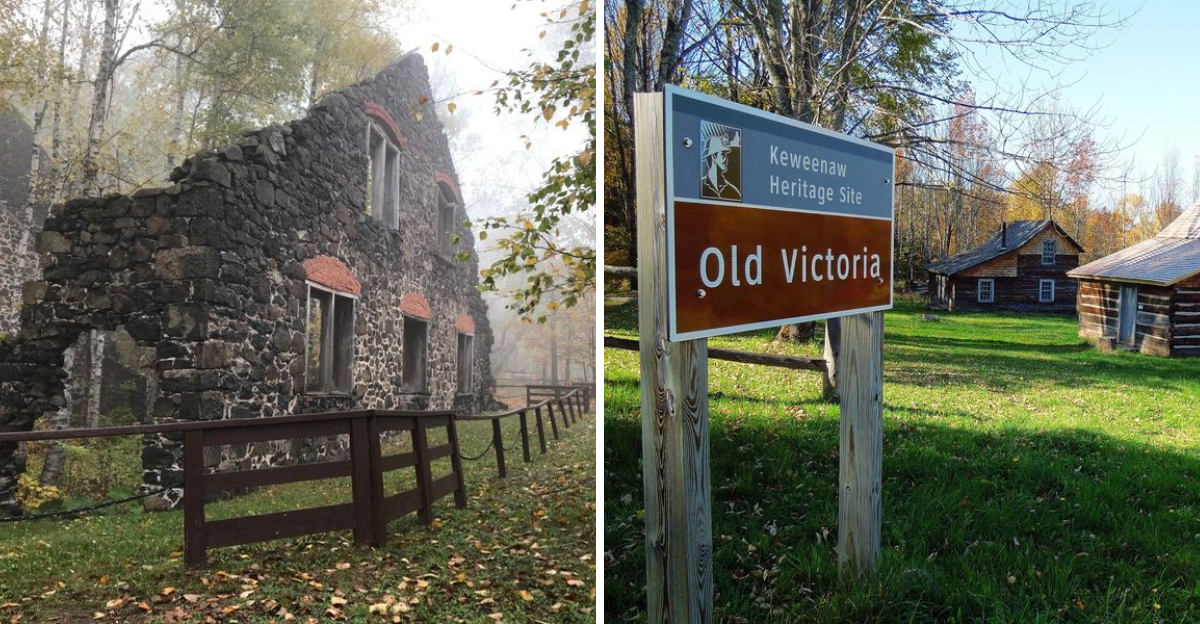
Michigan holds secrets from its past that most people never get to see. Scattered across the state are ghost towns and abandoned villages waiting to tell their stories. These forgotten places offer adventure seekers a chance to step back in time and explore history on their own terms.
Pack your camera and sense of curiosity because these deserted destinations promise unforgettable journeys into Michigan’s fascinating past.
1. Fayette Historic Townsite (Delta County)
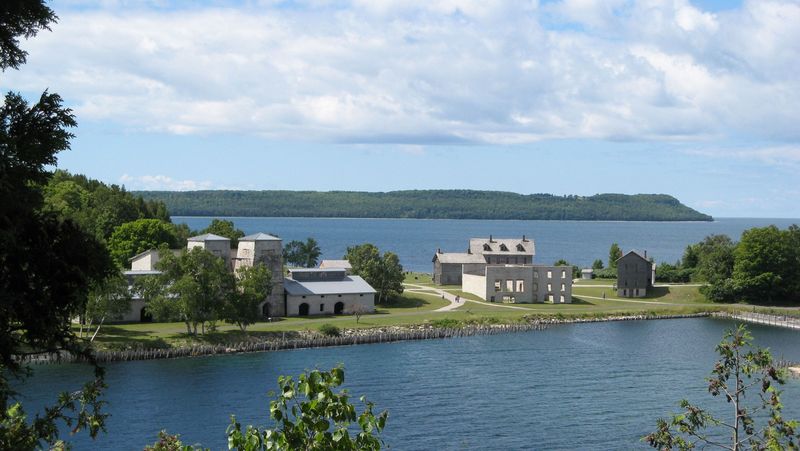
Walking through Fayette feels like someone pressed pause on history back in 1891. This once-thriving ironworking village sits quietly on the Garden Peninsula, its limestone furnaces still standing like silent giants. The company town produced iron for nearly two decades before economic troubles shut it down for good.
Twenty restored buildings now dot the landscape, offering visitors a peek into 19th-century industrial life. You can wander through the old hotel, opera house, and workers’ homes without anyone rushing you along. Best part? The stunning views of Snail Shell Harbor make this ghost town feel more like a hidden paradise than a forgotten relic.
2. Central Mine (Keweenaw County)
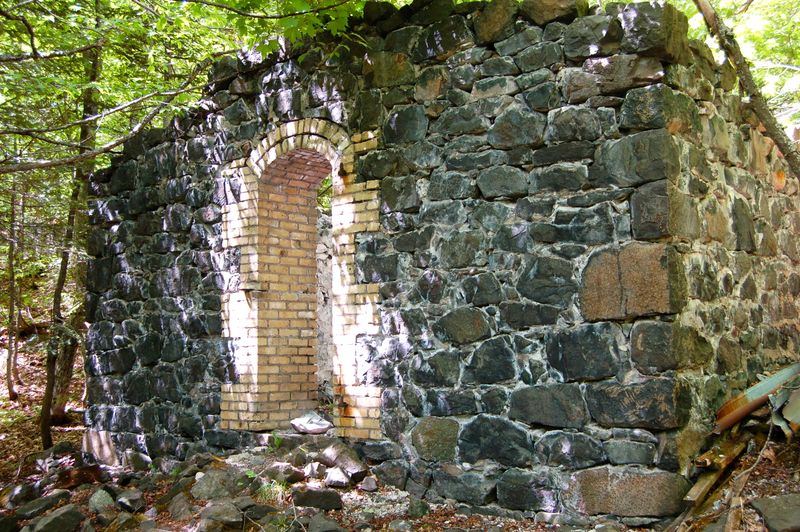
Central Mine earned its name by sitting smack-dab in the middle of the Keweenaw copper boom. Founded in 1854, this village once housed hundreds of miners and their families chasing the American dream underground. The mine produced over 52 million pounds of copper before closing in 1898, leaving behind stories etched in stone.
Today, nature reclaims what industry built, with trees growing through foundation walls and moss covering old equipment. The remaining structures whisper tales of immigrant workers who carved lives from Michigan’s rocky soil. Explorers find crumbling buildings, mine shafts, and even an old cemetery where mining families rest.
3. Delaware Ghost Town & Delaware Mine (Keweenaw County)

Delaware never became the copper empire its founders imagined, but failure created something cooler—an authentic ghost town frozen in time. Operations started with high hopes in 1847, yet the mine struggled to turn profits despite decent copper deposits. By 1887, the dream died, and families packed their belongings for opportunities elsewhere.
Scattered ruins tell the story better than any history book could. Old mine buildings stand at odd angles, slowly surrendering to gravity and weather. The Delaware Mine offers self-guided tours where you can touch the same rock walls miners saw daily. It’s haunting, educational, and strangely beautiful all at once.
4. Phoenix (Keweenaw County)
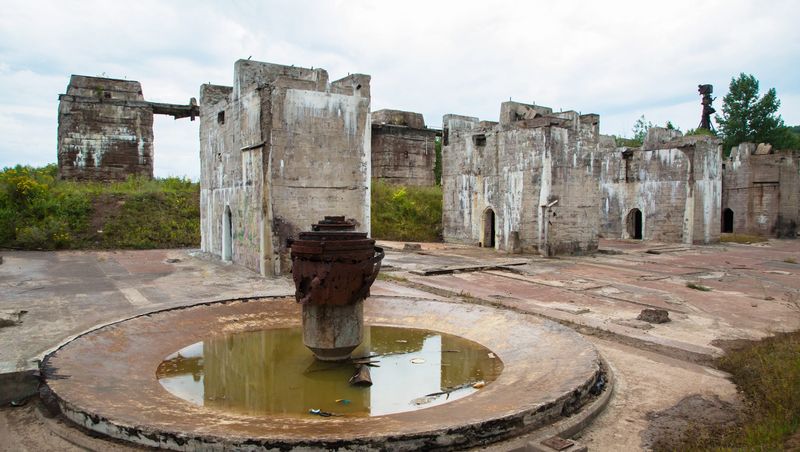
Phoenix rose from nothing in 1845 and burned out just as quickly, though not literally like its mythical namesake. This copper mining settlement never quite caught fire with success, struggling through ownership changes and financial headaches. By the 1870s, most residents had flown the coop, leaving behind empty homes and broken dreams.
What remains today is nature’s artwork painted over human ambition. Stone foundations peek through blankets of leaves and wildflowers. Rusted mining equipment sits like forgotten sculptures in an outdoor museum. The isolation makes Phoenix perfect for adventurers who prefer their history without crowds or tour guides breathing down their necks.
5. Freda & Champion Mill Ruins (Houghton County)

Champion Mill dominated Freda’s skyline like a industrial cathedral, processing copper ore from multiple nearby mines. Built in 1901, this massive complex represented cutting-edge technology and employed hundreds of workers who kept the machinery humming around the clock. The mill’s closure in 1967 pulled the plug on Freda’s heartbeat, and the town slowly emptied out.
Towering ruins still command respect, with brick walls reaching toward the sky and rusted equipment scattered like giant toys. The sheer scale of abandonment makes you appreciate how much effort went into extracting Michigan’s mineral wealth. Photographers love the dramatic industrial decay against Lake Superior’s backdrop.
6. Mandan (Keweenaw County)

Mandan proves that not all ghost towns die dramatic deaths—some just fade away when nobody’s looking. This tiny settlement served miners working nearby copper operations during the late 1800s. Without its own major mine, Mandan depended on neighboring communities for survival, making it vulnerable when the copper market crashed.
Finding Mandan requires determination since nature has nearly swallowed the evidence of human habitation. A few foundation stones and partial structures hide among the trees like clues in a treasure hunt. The remoteness adds mystery to your exploration, making you feel like a genuine archaeologist discovering forgotten history. Bring a good map because cell service is nonexistent out here.
7. Old Victoria Historic Site (Ontonagon County)

Victoria earned its royal name during the height of copper mining fever in the 1800s. This village supported the Victoria Copper Mine, which operated from 1849 until economic reality shut it down in 1921. Unlike many ghost towns, Victoria received some preservation love, making it easier to imagine daily life from a century ago.
Several original log buildings still stand, including homes, a church, and mine structures that transport visitors backward in time. The site offers self-guided exploration, letting you set your own pace through history. Interpretive signs explain what you’re seeing without being boring or preachy. Victoria proves ghost towns don’t need to be completely ruined to be fascinating.
8. Port Crescent Ghost Town Site (Huron County)

Port Crescent dreamed big as a lumber town and potential shipping hub in the 1850s, but Lake Huron had other plans. The town thrived briefly, boasting hotels, saloons, and a busy sawmill that chewed through Michigan’s seemingly endless forests. Then disaster struck repeatedly—fires, storms, and economic downturns hammered the settlement until residents finally surrendered around 1900.
Today, you’ll find more sand than structures at this ghost town turned state park. Lake Huron’s waves erased most evidence, leaving only a few foundation remnants and historical markers. It’s eerie imagining a bustling community where now only beach grass grows and seagulls call.
9. Deward Ghost Town Site (Crawford County)
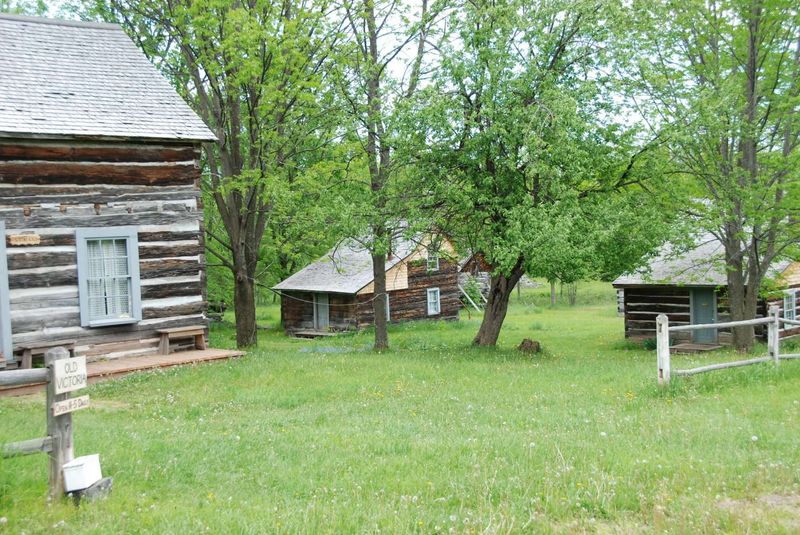
Deward lived fast and died young, burning through Michigan’s pine forests like there was no tomorrow. Founded in 1901 by lumber baron David Ward, the town quickly grew to 800 residents serving the hungry sawmill. Within just twelve years, the surrounding forests were stripped bare, and Deward’s reason for existing vanished into sawdust and stumps.
The forest has reclaimed almost everything, but determined explorers can still find foundation outlines and old roads leading nowhere. Interpretive trails help visitors understand what stood where, though imagination does most of the heavy lifting. Deward reminds us that some towns were always meant to be temporary, existing only to consume resources.
10. Garnet Ghost Town Area (Mackinac County)

Garnet sparkled briefly during Michigan’s mining era before fading into obscurity. This small settlement supported mining operations in the late 1800s, though it never achieved the fame or fortune of larger mining towns. When the mines played out, residents simply moved on to the next opportunity, leaving Garnet to the elements.
Getting to Garnet requires effort, which keeps casual tourists away and preserves the authentic ghost town experience. Scattered building remains and mining equipment rust peacefully among the trees. The isolation creates an almost spiritual atmosphere where you can hear history breathing in the wind. Pack supplies because amenities are as scarce as the people who once called this home.
11. Good Harbor (Leelanau County)

Good Harbor lived up to its name as a Lake Michigan fishing and logging settlement in the late 1800s. Families built lives around the harbor’s natural protection, harvesting fish and timber to support their community. But isolation and better opportunities elsewhere gradually drained the population until Good Harbor became just a memory with a view.
Almost nothing remains except stunning lakeside scenery that explains why settlers chose this spot. A few foundation stones and historical markers are all that prove people once lived, worked, and raised children here. The nearby Sleeping Bear Dunes National Lakeshore makes Good Harbor easy to visit while exploring one of Michigan’s most beautiful regions.
12. Cliff Mine And Clifton (Keweenaw County)

Cliff Mine made copper mining history as one of Michigan’s first major operations, opening in 1845 when copper fever infected the Keweenaw Peninsula. The mine produced phenomenal wealth, pulling massive copper nuggets from the earth and making early investors rich beyond imagination. The village of Clifton grew around the mine, housing workers and their families until operations ceased in 1870.
Impressive ruins still command the hillside, including tall stone structures that once housed mining equipment. The scale of what remains hints at how important this operation was to Michigan’s early economy. Exploring Cliff Mine feels like walking through the birthplace of Upper Peninsula prosperity.
